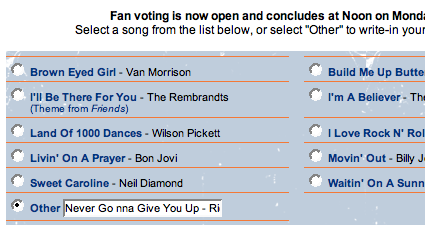There has been a lot of chatter regarding emerging media, new media, and how Web 2.0/Web 3.0 will change the world, let alone the practice of advertising as we know it. I am certain that the world, and conventional advertising, will definitely be affected…once effective methods to monetize these new media platforms are determined. If you keep up at all with the trades, you are certainly aware that Google’s purchase of YouTube has been terribly unprofitable, to say the least. And it remains to be seen if YouTube will ever provide profits for Google. There is also the constant buzz regarding Twitter: Is Twitter for sale? Are they working on a new business model? Or, is Twitter but a passing fancy?
One thing abundantly clear is that Social Media networks have become the new, untapped vein of gold for advertisers in the digital age. Social Media users freely provide relevant information about themselves which is then used by advertisers to segment them into convenient, targetable groups. Paired with Social Media’s meteoric rise in usage, advertisers are often left scrambling to hastily build strategies to reach this audience unobtrusively.
While all of this action (or perceived action) is exciting, the current trend seems to be more about making a buzz than making a buck, with a few exceptions:
In December 2008, Internet News reported that Dell produced over a million dollars in sales by offering discounts to consumers that followed Dell on Twitter. And while these sales accounted for but a drop in the bucket compared to their overall revenue ($61 Billion in 2008), it is evident that while Twitter’s not able to monetize their service, Dell had no problem doing so.
So, while most are playing catch-up, there are shining examples of advertisers and agencies that are ahead of the curve, positioning themselves to lead by example rather than yammering on about what they plan to do. Take, for instance, Lisa P. Maxwell (LPM) in Chicago. Visible, LPM’s web development arm, created LPM’s new Flash site, and fitted it with webcams at each employee’s desk. Anytime during the day, a client, prospective client, or curious web-surfer can click on one of the employee “cam profiles” and chat in real time with the employee. The site lets you know which person is available to chat via the use of two buttons that highlight the web cam images (green=available). Depending on the time of day, you might find yourself talking to the Creative Director, New Business Manager, or even a copywriting intern. It is actually quite fun to talk to this captive audience…they seem to be an intelligent bunch willing to answer most questions. I spoke to one of the Account Managers this morning about working at LPM and being on camera, and she said that they’ve had fantastic reviews. She also said that the best thing about LPM was “the people.” The point of this viral “experiment” is to increase traffic to LPM’s site via non-traditional methods, and in this sense, it has been a qualified success, adding 1500+ visits during the first month of operation. It’s not clear if any new business leads have been generated virally, but as with many viral endeavors, it may take some time. However, if I was marketing director looking for an agency to lead my business into the intricacies of social/emerging media marketing, I would certainly add Lisa P. Maxwell to the top of the list.
The point of this viral “experiment” is to increase traffic to LPM’s site via non-traditional methods, and in this sense, it has been a qualified success, adding 1500+ visits during the first month of operation. It’s not clear if any new business leads have been generated virally, but as with many viral endeavors, it may take some time. However, if I was marketing director looking for an agency to lead my business into the intricacies of social/emerging media marketing, I would certainly add Lisa P. Maxwell to the top of the list.
Some agencies lead. Others talk. And the rest just don’t get it.






















